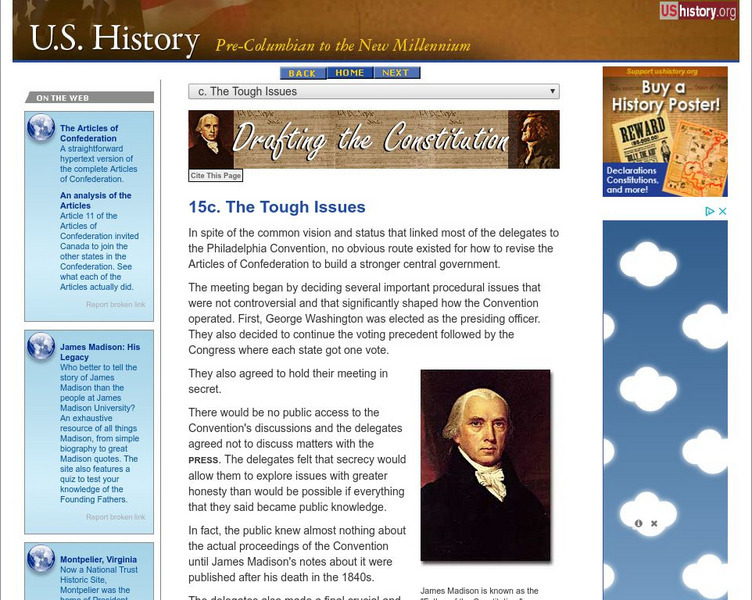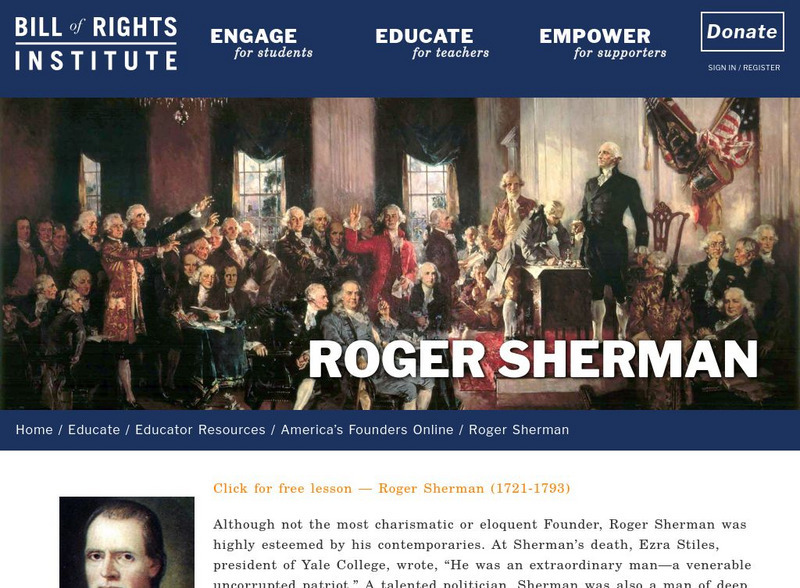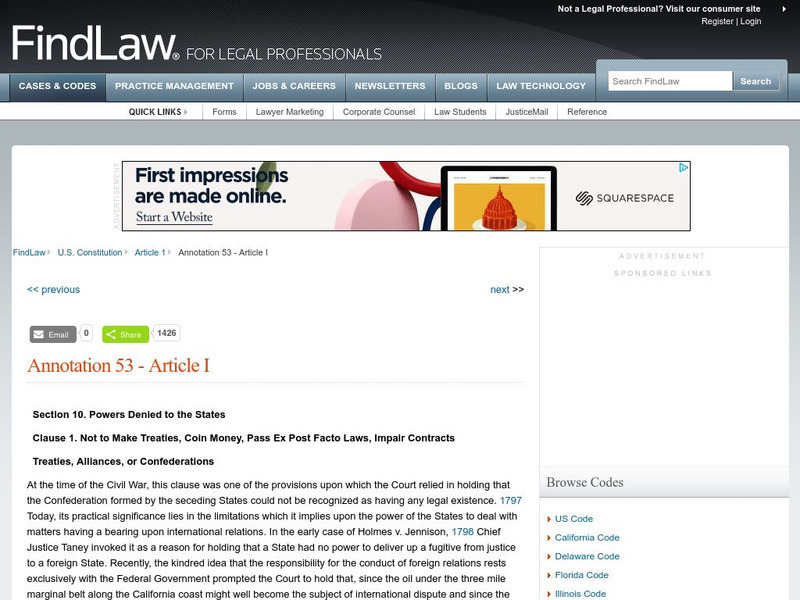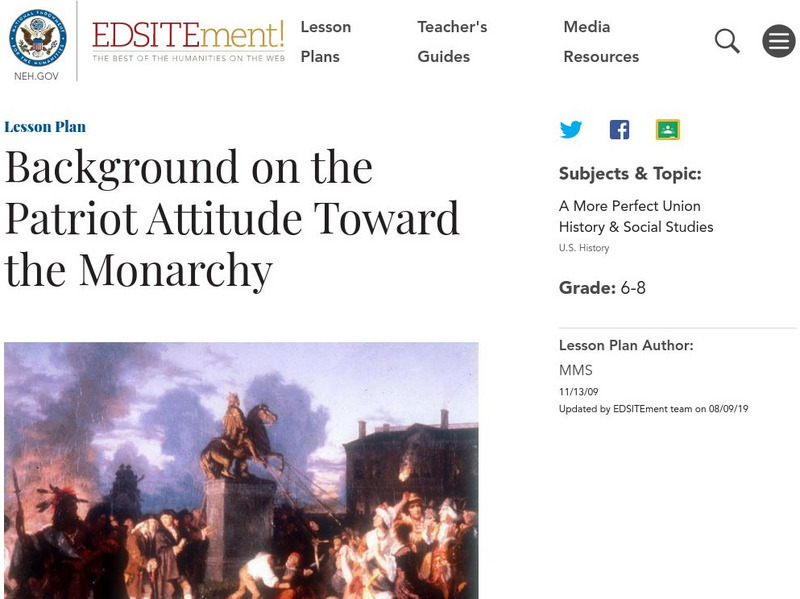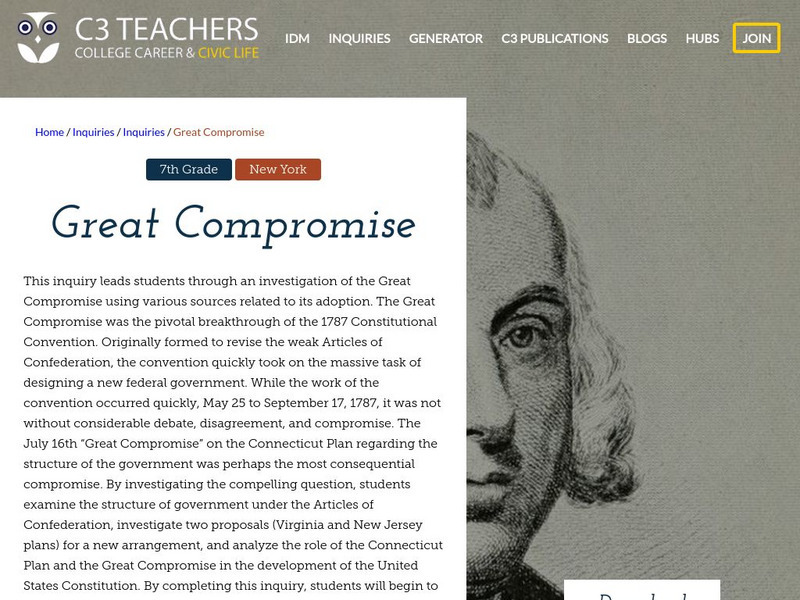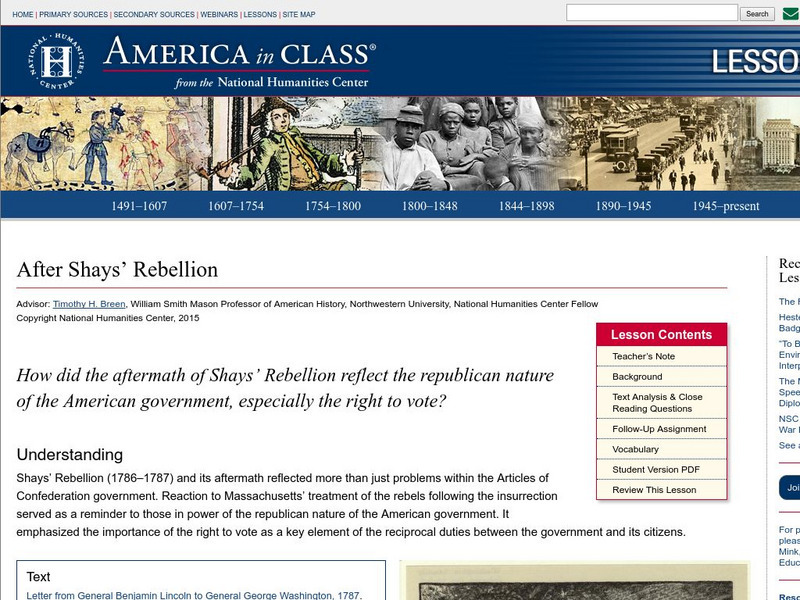Hi, what do you want to do?
Independence Hall Association
U.s. History: The Tough Issues
Read about the change of plans when delegates to the Philadelphia convention decided to write a new constitution to replace the Articles of Convention. See the ideas delegates had to address concerns of large and small states.
Other
Calliope Film: Shays' Rebellion and the Constitution
Synopsis of the historical significance of Shays' Rebellion in 1786 and how this upheaval influenced the Continental Congress to adopt the Constitution of the United States.
Bill of Rights Institute
Bill of Rights Institute: John Jay
John Jay epitomized the selfless leader of the American Revolution. Born to a prominent New York family, John Jay gained notoriety as a lawyer in his home state. He favored a moderate approach to Britain but joined his fellow Patriots...
Bill of Rights Institute
Bill of Rights Institute: Roger Sherman
Although not the most charismatic or eloquent Founder, Roger Sherman was highly esteemed by his contemporaries. At Sherman's death, Ezra Stiles, president of Yale College, wrote, "He was an extraordinary man-a venerable uncorrupted...
Bill of Rights Institute
Bill of Rights Institute: John Dickinson
John Dickinson was called "The Penman of the American Revolution." During the 1760s and 1770s, he authored numerous important essays in defense of American rights, including The Late Regulations Respecting the British Colonies, the...
Thomson Reuters
Find Law: Powers Denied to the States
Resource explains how during the time of the Civil War the Supreme Court used Article I, Section 10, Clause 1 of the U.S. Constitution to show that the Confederation formed by the seceding States had no legal existence. The site also...
Library of Congress
Loc: The Learning Page: Government Policy Toward Native Americans
How did the new government deal the Native Americans living in the Northwest Territory? Find out what the government did to keep the peace between the original inhabitants and the new settlers.
iCivics
I Civics: Road to the Constitution
How did we go from thirteen British colonies to the United States of America? Explore the major hardships of life under British rule, how the colonists decided to break away, and how they set a path for a new and independent government....
iCivics
I Civics: The Federalist Debate
The ratification debate between the Federalists and Anti-Federalists gives us insight into the ideas behind both sides and a better understanding of how our government developed in its early years.
A&E Television
History.com: The Patriot Financier Who Bankrolled the Revolutionary War
A brash, self-made millionaire helped fund the fight for independence, but after the war, he ended up in debtor's prison. Without Robert Morris, the American Revolution may have been crushed under a mountain of debt and disarray. The...
Khan Academy
Khan Academy: Ap Us History Period 3: 1754 1800: The American Revolution
This Khan Academy resource provides video lessons, detailed notes, and practice questions for the AP U.S. History Exam. The years 1754-1800 are covered.
Digital History
Digital History: A Bill of Rights? [Pdf]
There was no Bill of Rights attached to the original Constitution, but it was a topic of discussion. Read a reconstruction of speeches of delegates to the Constitutional Convention who debated for and against the inclusion of a way to...
Library of Congress
Loc: Creating a Constitution
A brief article on the efforts of Charles Pinckney along with others to amend The Articles of Confederation. Includes links to original text of unsuccessful amendments to The Articles of Confederation
A&E Television
History.com: Continental Congress
From 1774 to 1789, the Continental Congress served as the government of the 13 American colonies and later the United States. The First Continental Congress, which was comprised of delegates from the colonies, met in 1774 in reaction to...
National Endowment for the Humanities
Neh: Edsit Ement: Background on the Patriot Attitude Toward the Monarchy
In this lesson plan, middle schoolers will consider "Background on the Patriot Attitude Toward the Monarchy." The plan includes worksheets and other student materials that can be found under the resource tab.
History Teacher
Historyteacher.net: The u.s. Constitution: Quiz (1)
This 10-question multiple choice quiz is immediately scored and covers details about the Constitution and Articles of Confederation.
OpenStax
Open Stax: Debating Democracy
By the end of this section of a chapter on "Creating Republican Governments," students will be able to explain the development of state constitutions, describe the features of the Articles of Confederation, and analyze the causes and...
iCivics
I Civics: Trying Self Government
In this lesson, students will learn about the Articles of Confederation's strengths and weaknesses as well as how it downfalls impacted the writing and ideas in the U.S. Constitution.
C3 Teachers
C3 Teachers: Inquiries: Great Compromise
A learning module on the Great Compromise and the role it played in developing the US Constitution in 1787. It includes several supporting questions accompanied by formative tasks and source materials, followed by a summative performance...
National Humanities Center
National Humanities Center: America in Class: After Shays' Rebellion
Lesson on the aftermath of Shays' Rebellion as a reflection of the republican nature of American government and the right to vote. Includes primary resources with background information and strategies for analysis.
The Dirksen Congressional Center
Congress for Kids: Democracy
Aimed at younger students learning about government, this section of the larger 'Congress for Kids' website focuses on Democracy. Links to related topics include democracy vs autocracy, 13 Colonies, Declaration of Independence, and...
Ducksters
Ducksters: Us Government for Kids: Constitution
Read about the history of the United States Constitution, then try the multiple-choice quiz. Includes an audio narration of the text and a link to a biography of James Madison, as well as links to other resources.
Tom Richey
Tom richey.net: The u.s. Constitution: Framing, Principles and Ratification [Ppt]
Presents key ideas for examining how the Articles of Confederation were replaced with the Constitution and the compromises that were reached during debates.
PBS
Wnet: Thirteen: Freedom: A History of Us: Revolution: Continental Congress [Pdf]
A lesson plan from the producers of the 16-episode PBS series "Freedom: A History of US" that examines the rules by which the Continental Congress governed colonial America. Learners will identify people who held positions of leadership...





